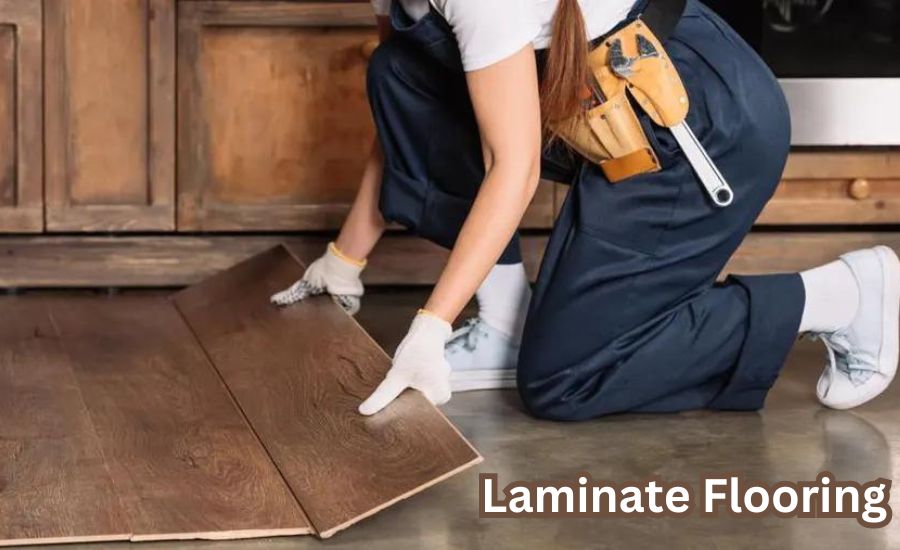Laminate flooring from 50Floor is both strong and attractive, but many wonder if it’s suitable for wet areas like bathrooms, kitchens, and basements. With the right approach, laminate can be a great choice for these spaces.
Laminate floor installers from 50Floor will show you how to properly install and protect laminate flooring in these spaces, and how to select the right materials to ensure it stays in excellent condition for years to come.
Ready to enhance your home with durable and beautiful laminate flooring? Contact 50Floor today!
Types of Laminate Flooring for Moisture
When choosing laminate flooring for moist areas, go for waterproof or water-resistant options to prevent damage from water. Laminate floorboards engineered for high moisture resistance are ideal for bathrooms and kitchens. You have a ton of types to pick from.
- Water-Resistant Options
Water-resistant laminate flooring is ideal for kitchens and bathrooms due to its moisture-protecting layer, but it’s not fully waterproof. To avoid water damage, it needs to be installed and kept up correctly.
- Importance of Thickness
Thicker laminate planks not only look better but also resist bending and warping from moisture better. They also improve sound insulation, making them more comfortable in damp areas. When choosing laminate for wet places with a lot of people walking, a thicker plank is usually the best choice.
- AC Ratings
AC ratings are important for figuring out if laminate flooring is good for certain places. They check how durable it is and if it can handle moisture. For wet and busy areas, you need at least an AC3 rating. Even if your floors have a high AC rating, you still need to maintain them well to ensure they last a long time.
Benefits of Laminate in Moist Areas
One of the most significant benefits of laminate flooring in moist areas is its resistance to water damage. Unlike traditional hardwood, laminate flooring is designed with a protective layer that shields it from water infiltration.
This makes it an excellent option for kitchens, bathrooms, and basements where moisture is a common concern. With proper installation and maintenance, laminate flooring can withstand the challenges posed by humid environments, ensuring longevity and durability.
Another significant benefit of laminate flooring in moist areas is its ease of maintenance. The protective surface layer prevents the absorption of spills and stains, making cleaning simple and efficient. This low-maintenance quality is especially advantageous in moisture-prone areas where spills and splashes are more common, allowing homeowners to enjoy their floors without constant worry.
Additionally, laminate flooring offers a wide range of design options, allowing homeowners to achieve the look of more expensive materials like hardwood or stone without the associated costs or upkeep challenges.
Advances in printing technology enable realistic textures and patterns that mimic natural materials, providing versatility in style and finish. The straightforward and cost-effective installation process, often featuring a click-lock system, further enhances its appeal, making laminate flooring a practical and stylish solution for moist areas.
Installation Guide for High-Moisture Areas
When installing laminate floors in wet areas, use a moisture barrier. You could then tightly seal the plank edges to prevent water damage and extend the floor’s lifespan.
Here are some tips for installing laminate flooring in high-moisture areas:
- Preparing the Subfloor
Before installing laminate, make sure the subfloor is dry, level, and clean to avoid issues. Always check if concrete floors are too moist for laminate. In damp areas, use moisture-proof underlays. They provide an extra layer of defense against moisture.
- Importance of Gaps
Expansion gaps are essential around the perimeter of laminate floors. They accommodate moisture-induced swelling. The size of these gaps should align with room dimensions and manufacturer guidelines. Cover these gaps with baseboards or molding. Make sure they do not pin the flooring down, allowing it to expand and contract as needed.
- Using Sealants
Applying sealants along edges and seams boosts water resistance in high-moisture areas. However, avoid over-sealing. This can hinder the floor’s natural movement. For best results, consult with flooring professionals about the most effective sealant options and application methods.
- Right Installation Pattern
The installation pattern can affect a floor’s stability and resistance to moisture. Avoid patterns that create long, continuous seams parallel to the main moisture source. Consulting with professionals helps balance aesthetics and functionality in your choice of installation pattern.
Revitalize Your Home’s Style and Durability with 50Floor Laminate Flooring Solutions!
Laminate flooring offers a durable and attractive option for high-moisture areas. By following expert guidelines for selection, installation, and maintenance, you can enjoy the beauty and functionality of laminate flooring in your bathrooms, kitchens, and basements.
Investing in the right type of laminate flooring and ensuring professional installation will provide you with a practical and stylish solution for wet areas in your home. With these tips, your laminate flooring can handle the challenges of high-moisture environments while maintaining its appeal.
Ready to enhance your home with durable and beautiful laminate flooring? Contact 50Floor today!
May Also You Like: Discover Essential
